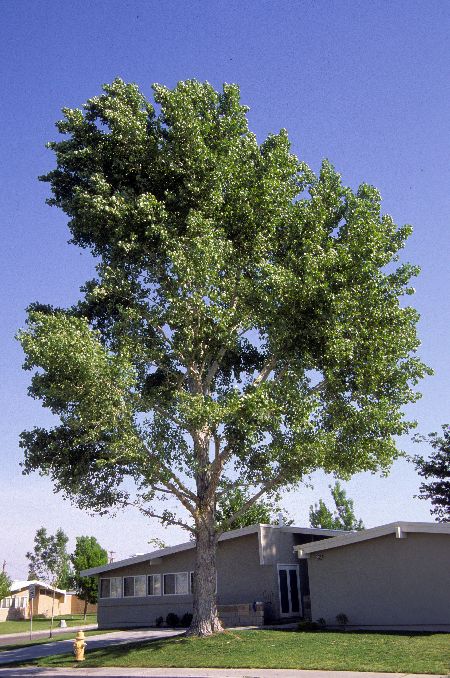
Populus fremontii
Fremont Cottonwood, Poplar
Bright yellow fall color is an attractive feature. Female trees produce the cottony seeds that drift in the wind. Male trees are available that are seedless (no cotton). Canopy coverage: 707 square feet.
[Read More]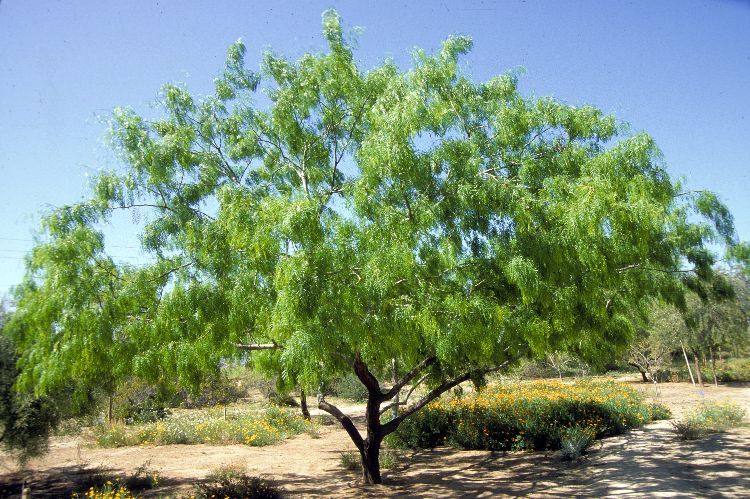
Prosopis glandulosa
Texas Honey Mesquite
This is a sprawling tree with character that takes time to develop. Its serious thorns require caution when pruning or grooming trees. 'Maverick' is a thornless selection. A similar tree is the Western Honey Mesquite. Its foliage is dark green compared to the bright green of Texas Honey. Canopy coverage: 707 square feet.
[Read More]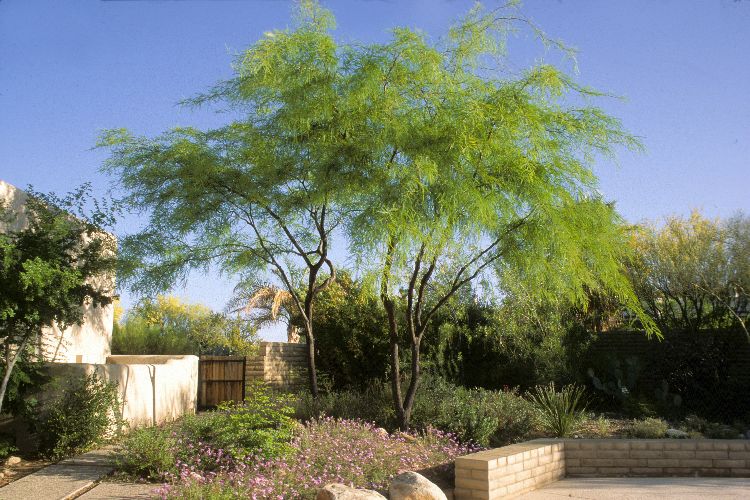
Prosopis hybrid
South American Hybrid Mesquite
Mesquites are prime, fast-growing trees for shade and screening. Important to water deeply at tree's dripline (well away from trunk) to encourage deep roots. In windy regions, blowover can be a problem. Canopy coverage:707 square feet.
[Read More]Prosopis pubescens
Screwbean Mesquite
Screwbean Mesquite can be grown as a shrub or trained into a small tree. Thorny—prune with caution. Very low water use but improved appearance with additional water. Canopy coverage: 707 square feet.
[Read More]Prosopis velutina
Velvet Mesquite
This Southwest native mesquite represents the character of the desert. 'Phoenix' is a selection that features the rootstock of the native tree grafted to a South American hybrid mesquite. Canopy coverage: 707 square feet.
[Read More]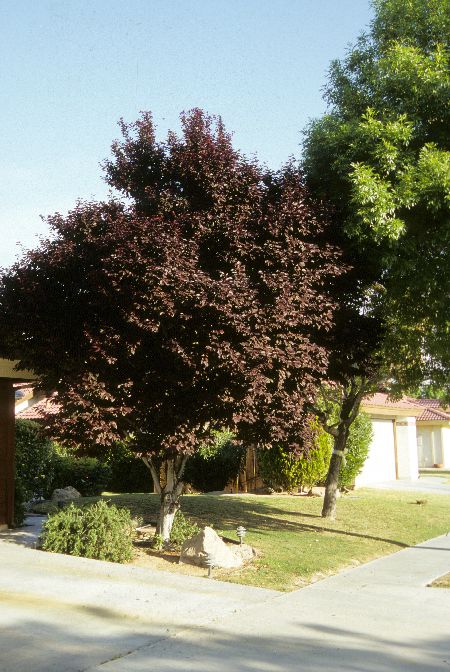
Prunus cerasifera 'Atropurpurea'
Purple Leaf Plum
Purple Leaf Plum is a small tree that remains in scale for residential use. Purple to bronze foliage contrasts nicely with green or gray-leaved plants. Canopy coverage: 177 square feet.
[Read More]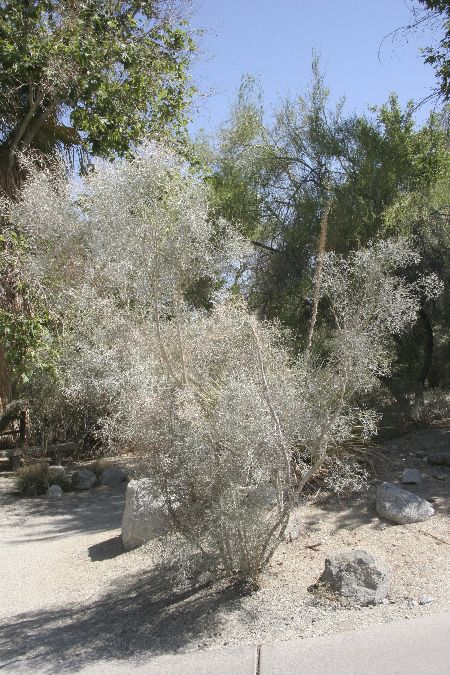
Psorothamnus spinosus
Desert Smoke Tree
The natural habitat of Desert Smoke Tree is along desert washes. Accepts low water, but occasional deep irrigations will improve plant appearance. May be hard to find plants but worth the search. Canopy coverage: 177 square feet.
[Read More]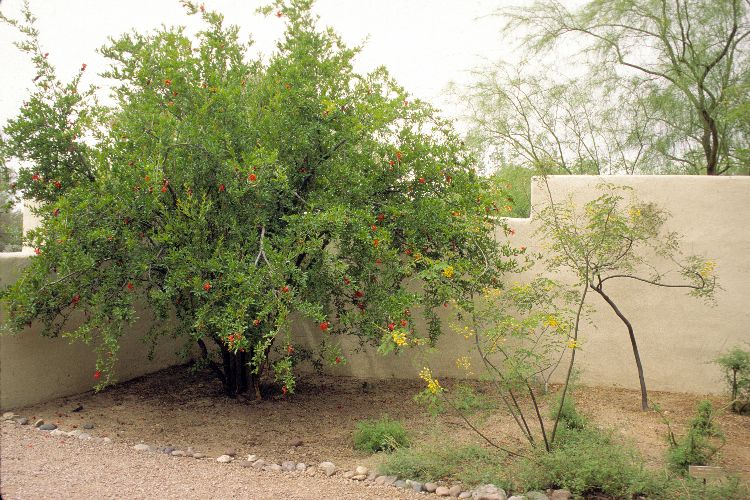
Punica granatum
Pomegranate
Pomegranate can be grown as a shrub or small tree. Edible fruit is a primary attraction. If fruit is the goal provide more water during summer. Canopy coverage: 113 square feet.
[Read More]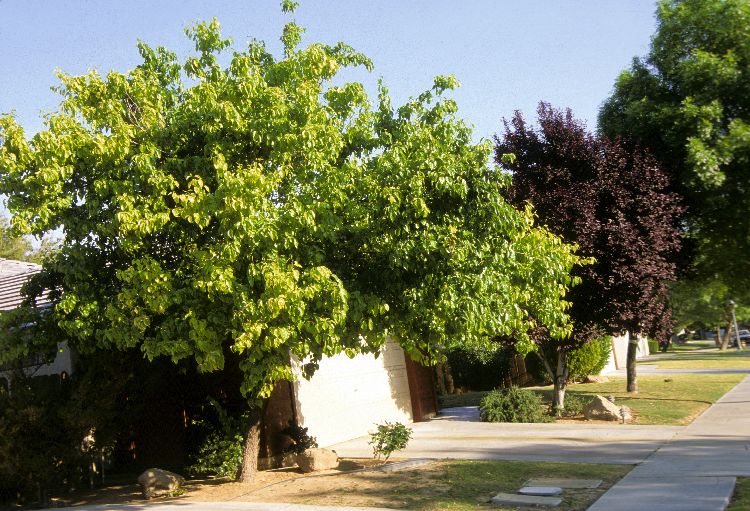
Pyrus calleryana 'Bradford'
Bradford Pear
This dramatic flowering tree blooms early in spring, sometimes so early that freezes affect flowers. Additional cultivated varieties are available; check with local nurseries. Canopy coverage: 962 square feet.
[Read More]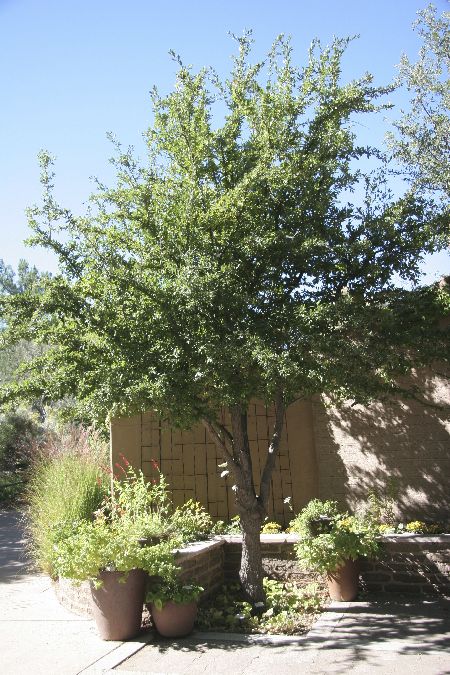
Quercus fusiformis
Escarpment Live Oak
This west Texas native is naturally drought tolerant and accepts tough conditions. Canopy coverage: 1,963 square feet.
[Read More]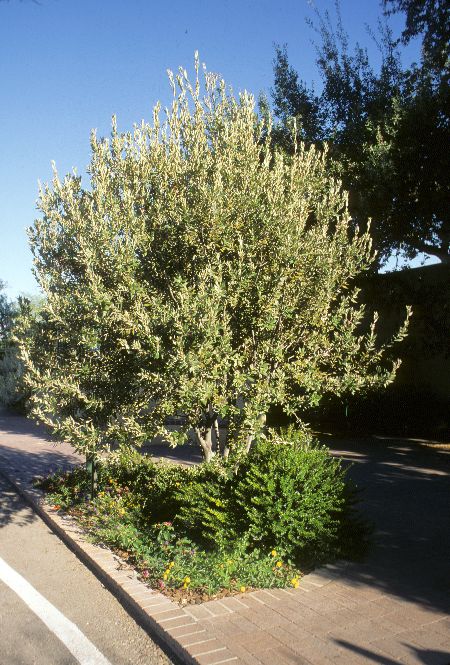
Quercus ilex
Holly Oak
Holly Oak can be grown as a tree or shrub, and actually makes a nice screen or hedge when planted close together. Canopy coverage: 1,963 square feet.
[Read More]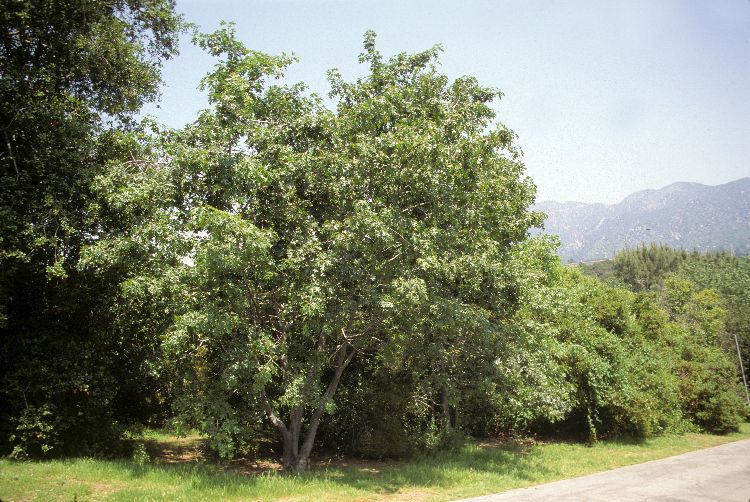
Quercus kelloggii
California Black Oak
An Oak that remains in scale for most home landscapes, but can reach up to 80 feet in ideal conditions with time. Yellow to yellow-orange fall color. Bark is dark gray and furrowed. Canopy coverage: 1,257 square feet.
[Read More]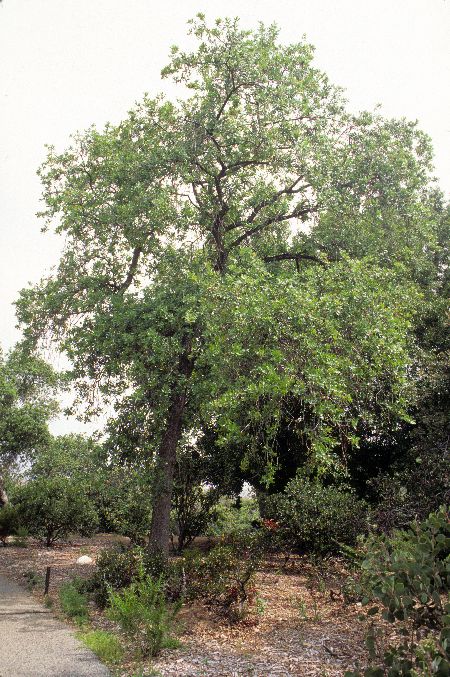
Quercus lobata
Valley Oak
One of the largest if not the largest North American oak. Gives California's Central Valley its sense of place. Massive trunk and limbs are often twisted with age. Canopy coverage: 5,027 square feet.
[Read More]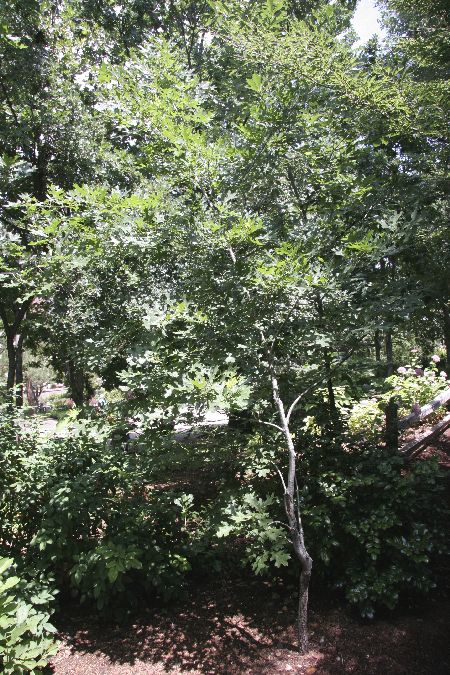
Quercus muehlenbergii
Chinquapin Oak, Chestnut Oak
Chinquapin Oak is a tree for large open areas. Trees can be difficult to establish. Leaves turn gold in fall. Canopy coverage: 2,827 square feet.
[Read More]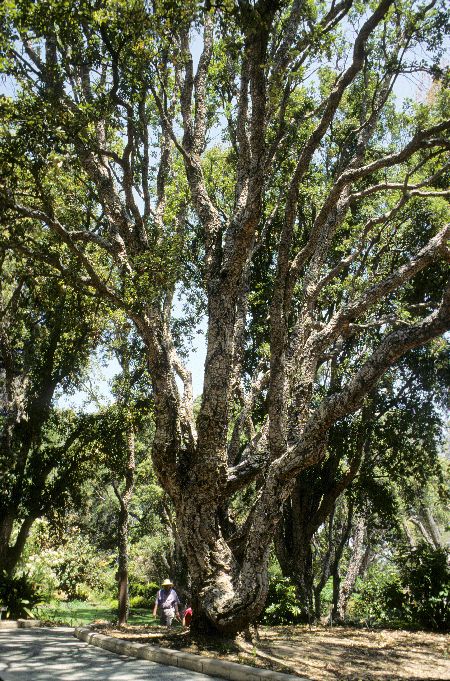
Quercus suber
Cork Oak
The deeply furrowed bark of Cork Oak, from which cork is harvested in certain parts of the world, is an attraction. Adapted to desert conditions. Canopy coverage: 1,257 square feet.
[Read More]Quercus turbinella
Desert Scrub Oak
Can be grown as a tree form, but more often serves as a shrub in tough conditions. Sharp-tipped leaves are evergreen but drop in spring as new leaves replace them. Canopy coverage: 28 square feet.
[Read More]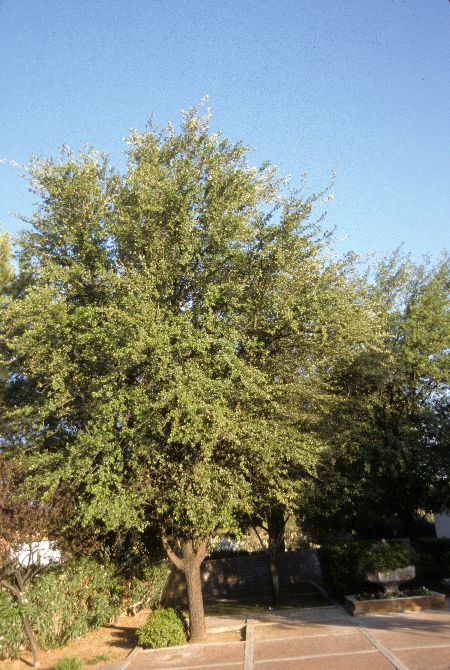
Quercus virginiana 'Heritage'
Southern Live Oak
This is a quality evergreen shade tree. Look for 'Heritage', which has shown to be well adapted to desert conditions. Canopy coverage: 2,827 square feet.
[Read More]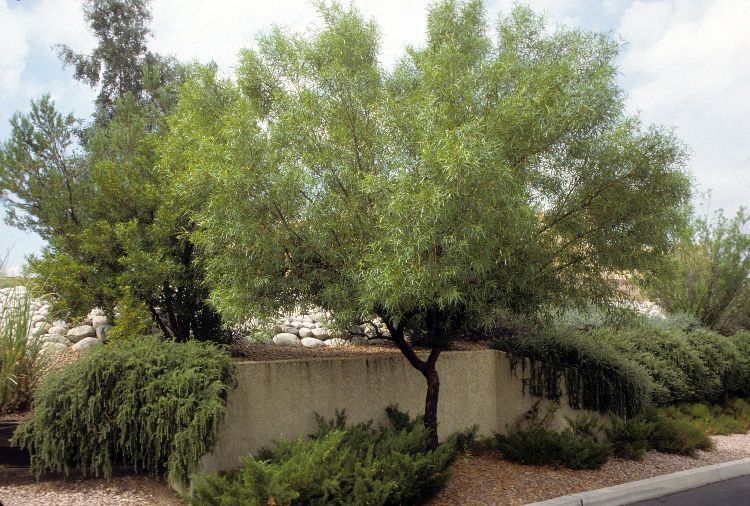
Rhus lancea
African Sumac
This is an attractive evergreen tree but female plants can be messy with prolific production of berries. Some people are allergic to its pollen. Canopy coverage: 1,257 square feet.
[Read More]Rhus lanceolata
Flame-leaf Sumac
This plant can be grown as tree or shrub. The common name Flame-leaf Sumac is due to the shiny green leaves that turn brilliant orange to red in the fall. Canopy coverage: 314 square feet.
[Read More]Robinia neomexicana
New Mexico Locust, Desert Locust
New Mexico Locust can be grown as a tree or shrub but most often a thicket-forming, spiny shrub, useful as a barrier or screen. Note that seeds are poisonous. Flowers are fragrant and are profuse in clusters. The interesting seed pods are dark brown, hairy, up to 4 inches long, and hang on branches for a long time. Canopy coverage: 113 square feet.
[Read More]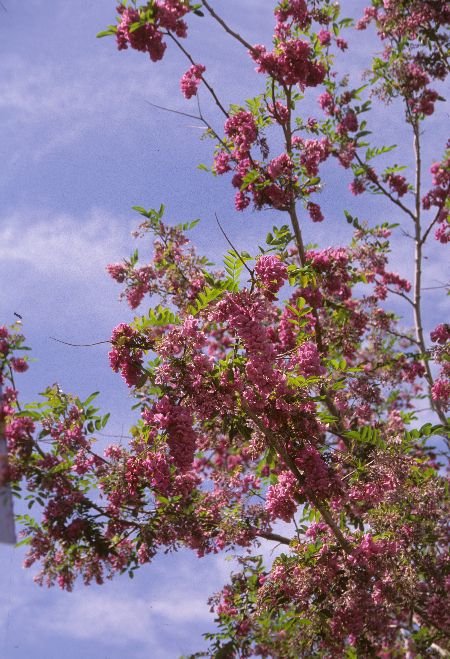
Robinia pseudoacacia
Black Locust
Black Locust has an open, branching form. Requires pruning-training when young to develop into an appealing flowering tree. Canopy coverage: 2,827 square feet.
[Read More]